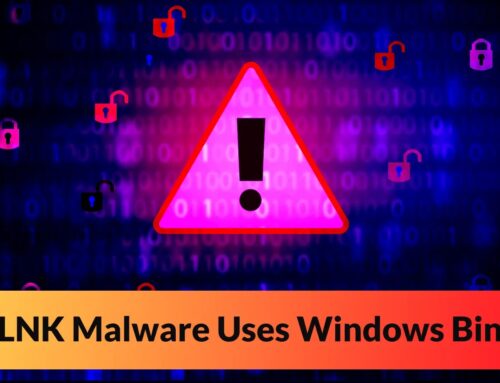
Hackers Leverage GitHub Notifications to Mimic as Y Combinator to Steal Funds from Wallets
The Deceptive Lure: How GitHub Notifications Are Hijacked by Phishing Campaigns
In a concerning development, cybercriminals are actively exploiting GitHub’s legitimate notification system to launch sophisticated phishing attacks. These campaigns, designed to mimic trusted entities like the prominent startup accelerator Y Combinator, aim to steal cryptocurrency funds from unsuspecting developers’ digital wallets. This method leverages the inherent trust in platforms like GitHub, bypassing conventional security measures and presenting a particularly insidious threat. Understanding this tactic is crucial for anyone operating within the developer ecosystem.
Anatomy of the GitHub Notification Phishing Scam
The core of this attack lies in its ingenious use of GitHub’s infrastructure. Threat actors orchestrate a phishing campaign by creating and manipulating issues within GitHub repositories. Instead of relying on traditional email-based phishing, which is often caught by robust email security filters, they leverage GitHub’s built-in notification system. When an issue is created or commented on, GitHub sends legitimate notifications to subscribed users.
The attackers specifically impersonate Y Combinator, a well-known and highly respected startup accelerator, by sending out fake funding opportunity notifications. These notifications, delivered directly through GitHub, appear credible due to their origin from the platform itself. The deceptive messages entice developers with the promise of investment, leading them to malicious links that are designed to compromise their cryptocurrency wallets or siphon sensitive information.
By bypassing traditional email security gateways, these campaigns achieve a higher rate of delivery and a greater likelihood of user engagement. This method highlights a significant vulnerability in the trust placed in platform-native communication channels.
Why GitHub Notifications Present a Unique Challenge
The effectiveness of this phishing campaign stems from several factors:
- Legitimate Source: Notifications originate from GitHub’s servers, instantly granting them a veneer of authenticity that typical phishing emails lack.
- Bypassing Email Filters: Since the initial notification is not an email from an external sender, standard email security protocols often fail to detect or block these phishing attempts.
- Targeted Audience: Developers, often active on GitHub, are the primary target, and they are typically more inclined to trust communications within their professional ecosystem.
- High-Value Target Lure: The impersonation of Y Combinator, a gateway to lucrative startup funding, provides a compelling and high-stakes lure for victims.
Remediation Actions and Proactive Defense
Protecting against these sophisticated GitHub notification phishing attacks requires a multi-layered approach. Developers and organizations must be vigilant and proactive in their security posture.
- Verify All Opportunities: Always independently verify any funding or investment opportunities, regardless of how official the notification appears. Navigate directly to the official website of the organization (e.g., Y Combinator) instead of clicking links in notifications.
- Scrutinize Source Materials: Even within GitHub, examine the sender’s profile, repository activity, and issue details for any inconsistencies or red flags. Malicious actors often have newly created or low-activity profiles.
- Enable Multi-Factor Authentication (MFA): Ensure MFA is enabled on all GitHub accounts and cryptocurrency wallets. This adds a crucial layer of security, making it harder for attackers to gain unauthorized access even if credentials are compromised.
- Review GitHub Notification Settings: Regularly review and configure your GitHub notification settings to minimize unwanted or suspicious alerts.
- Educate and Train: Conduct regular security awareness training for all developers and employees, emphasizing the evolving tactics of phishing and social engineering.
- Utilize Security Tools: Implement browser extensions that identify and warn against phishing sites. Utilize endpoint detection and response (EDR) solutions to monitor for suspicious activity post-compromise.
- Report Suspicious Activity: If you encounter a suspicious GitHub issue or notification, report it directly to GitHub’s security team. Timely reporting helps protect others.
Tools for Enhanced Security
While direct detection tools for this specific GitHub notification vector are limited (due to its nature as a social engineering attack on a legitimate platform), several tools can help bolster overall security and identify subsequent malicious activity:
| Tool Name | Purpose | Link |
|---|---|---|
| Google Safe Browsing | Identifies and warns users about malicious websites, including phishing pages. | https://safebrowsing.google.com/ |
| AdBlock Plus / uBlock Origin | Blocks malicious ads and some tracking scripts that can sometimes lead to phishing sites or distribute malware. | https://adblockplus.org/ |
| Identity Theft Protection Services | Monitors for compromised credentials and alerts users if their personal information is exposed. | (Varies by provider, e.g., Experian, LifeLock) |
| Hardware Security Keys (e.g., YubiKey) | Provides strong multi-factor authentication, highly resistant to phishing attempts. | https://www.yubico.com/ |
| Cryptocurrency Wallet Security Audits | While not a tool, regularly auditing wallet security and practices is vital. | (Consult specific wallet provider documentation) |
Key Takeaways for Developers and Organizations
The exploitation of GitHub’s notification system for phishing represents a significant evolution in cyberattack methodologies. It underscores a critical principle: even legitimate and trusted platforms can be weaponized against their users. Developers must cultivate a healthy skepticism towards all unsolicited offers, regardless of their apparent origin. For organizations, fostering a strong security culture and implementing robust technical and educational safeguards are paramount to protecting intellectual property and financial assets in an increasingly deceptive digital landscape.





